The Final Hours of Metal Gear Solid 2: Sons of Liberty
Geoff Keighley takes you behind the scenes in this exclusive feature about the last days of the development of 2001's biggest game.

Editor's note: This story was originally posted on November 22, 2001.
Nothing Is Impossible
Growing up in Kobe, Japan, Hideo Kojima, 38 (Editor's note: When story was originally published, now 48) in 2012, was just like any young boy looking for fun in an era when video games didn't yet exist. "When I was a young boy, I enjoyed games like cops and robbers, cowboys and Indians, kick the can, and hide-and-go-seek," Kojima says as he sits in his 6th-floor office at Konami Computer Entertainment Japan in the Ebisu district of Tokyo. "When I would play hide-and-go-seek, I remember flattening myself against the wall and looking around the corner to see if anyone was there," he admits with a laugh, followed by a light cough.
The mix of Kojima's laughter and coughing is a telling juxtaposition that represents both the joy and hardship he has been through these past three years--a thousand days of work that will hopefully culminate tonight, September 28, 2001, with the production of a final version of Metal Gear Solid 2: Sons of Liberty, the most anticipated PlayStation 2 game of the year and the follow-up to his much-revered 1998 PlayStation game, Metal Gear Solid.
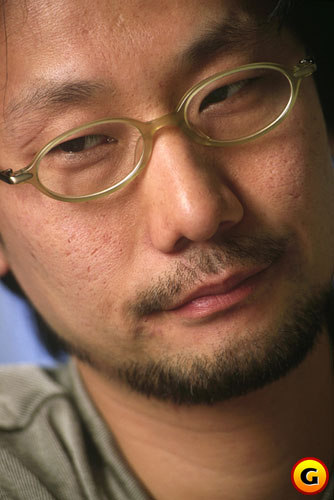
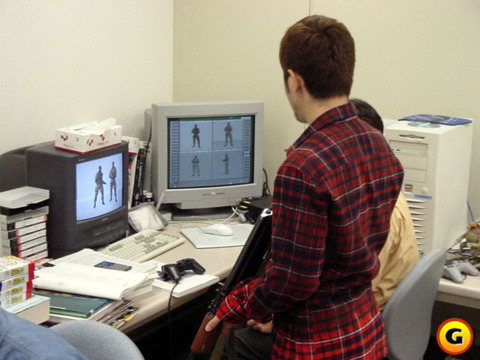
Kojima admits that at its core Metal Gear Solid is really the childhood game of hide-and-seek brought to life on a TV screen. "When Snake flattens himself against the wall to avoid enemies, I always think back to the days when I was a boy playing with my friends," he says as his eyes glance down at a bug sheet listing the remaining problems with the game.
While looking at the list, Kojima begins to slowly shake his head and sigh. His body language says what he doesn't speak aloud: Unfortunately, building a game the size and scope of Metal Gear Solid 2 is a lot tougher than calling up some friends to arrange a game of hide-and-seek. "You see this callus on my finger?" Kojima asks. "Well, that's from me using so many highlighters to go through all the bugs. I use up at least two highlighter pens a day."
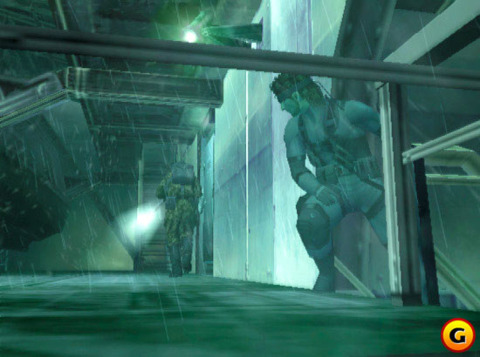

Today, if there's any type of hide-and-seek going on, it's among the programmers who are furiously trying to hunt down the final bugs in the game. In the main development area, a war-room-like space no larger than a high school gymnasium, 70 programmers, designers, musicians, and artists are part of the blandly named "Production Department #1" responsible for Metal Gear Solid 2. In one corner of the room Scott Dolph, international affairs manager, walks by and pulls out his cell phone--it has the Metal Gear Solid 2 theme programmed as a ring tone. The phone begins to play the theme; you get the sense everyone has heard it just a few times before.
At the other side of the room a programmer looks perplexed, his head in his hands as he tries to solve a problem in the game's code. A minute later, his head pops up; he has an idea, and you half expect an exclamation point to appear above his head, as they do in the game when an enemy discovers Snake's presence. If everything goes according to plan, a few more "Aha!" moments among the programmers will be all that is needed to bring a three-year-long journey to an end. Metal Gear Solid 2 is that close to being done.

To the Moon and Back
After surveying the room you can tell the team, half of which is newly graduated from college, is tired. But they are still determined. In his sound studio, Kazuki Muraoka works on placing the final sound effects. There's no doubt the high-tech world of video games is much different from what it was like for him to play bass in his high school band, School's Out. But he enjoys the challenge. "Each and every surface in the game has to have the right sound attached to it," he says. "That means thousands and thousands of surfaces have to be checked. I have to go through every scene in the game and make sure the right sound is played when you walk over each surface." Now, Muraoka thinks he is almost done checking every nook and cranny in the game.
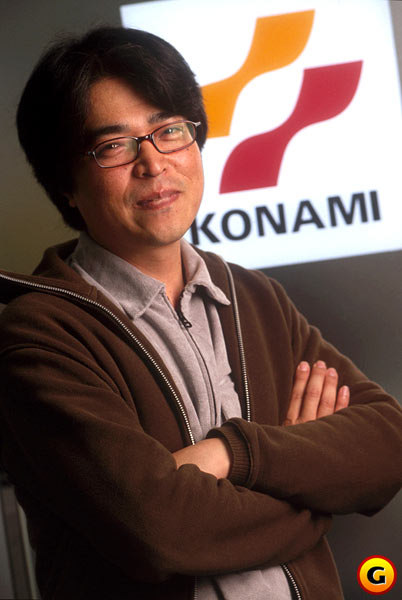
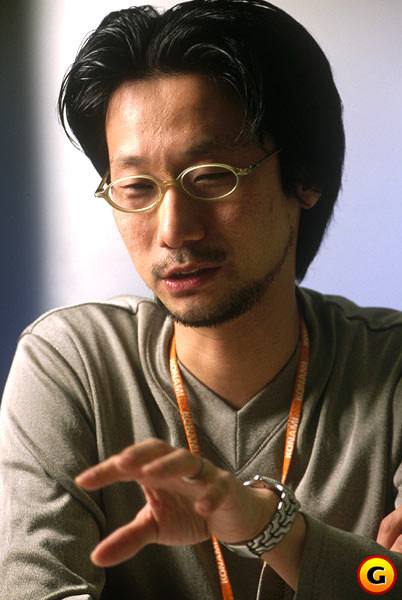
Tonight, each and every employee on the 70-person team has his or her own little nook and cranny to check. What must be two hundred different TV and computer monitors all glow with images from different parts of an epic game that is part high-tech hide-and-seek, part Jerry Bruckheimer-esque action movie, and 100 percent a Hideo Kojima game. And it's a game that almost didn't make it out this year.
"I was worried that it would be absolutely impossible for us to finish Metal Gear Solid 2 this year." -Hideo Kojima
"When I was flying back from E3 in May, I was really worried," admits Kojima. "Not worried in the sense that we might not be able to finish the game. I was worried that it would be absolutely impossible for us to finish Metal Gear Solid 2 this year, the year of the snake." Hidden behind closed doors for most of the year as part of a self-imposed media and communications blackout, Kojima says that what happened behind the scenes was a frantic race to realize the impossible. "I must tell you, I was sitting here in June and thinking that no matter how hard anyone on the team could work we would not finish the game this year. And that was the toughest point in my 15 years in the game industry."
Yet today, what was once thought impossible is now within reach. The bugs in the game are down to the final few; Kojima knows he is within hours of finishing the game. So how did the impossible turn into a realizable goal? Kojima ponders the question for a moment. "Well," he explains, "there was something that always encouraged me. Leonardo da Vinci is someone I respect a lot as an artist and a scientist. He was brilliant. But the one thing he said was impossible was flying to the moon." Kojima gives a dramatic pause. "And you know what? Flying to the moon ended up being possible. So I kept saying to myself, 'Nothing is impossible.'"
Impossible it wasn't. This is how they did it…

A New Form of Entertainment
While hide-and-go-seek might have entertained Kojima as a young boy, by the time he was at the university he found himself enamored with a new pastime: video games. "It was after I played Super Mario Brothers and Xevious on my Famicom that I said, 'Oh wow, this is a new form of entertainment.'"
For Kojima, the discovery of video games was not just a way to pass his time but the opportunity to learn about a new form of entertainment. Always a fan of movies and entertainment, Kojima spent his teenage years watching TV shows such as Bewitched and I Dream of Jeannie and movies such as 2001: A Space Odyssey and Taxi Driver. "I really did want to become a film director," he explains. "The people of my generation are visually oriented. Unfortunately we can't go out ourselves and film our own professional films because of the cost."
Still, Kojima had ideas and stories he wanted to tell--so he turned to the written page. "What I did to realize what was in my mind was write novels, but it was frustrating because I wanted to do things visually," he says. Although he wrote a number of long novels at university, once Kojima began exploring video games he saw the perfect opportunity to blend his storytelling with a visual medium that would, at least in its early days, be much more economical to produce than a feature film. (Today, Kojima has said that Metal Gear Solid 2's budget is around what it costs to make a Japanese Godzilla film, approximately US$10 million).


As soon as he graduated from the university in 1986, Kojima was hired by Konami as a game planner. Right from the start, one of Kojima's first projects was an MSX game entitled Metal Gear, which was also developed for the Nintendo Famicom soon thereafter. The game followed the exploits of Solid Snake, an operative for the elite Special Forces unit FOXHOUND, who was sent to Africa to investigate a strange weapon of mass destruction named Metal Gear. While the game was a success and Kojima produced a few additional Metal Gear games, he would also go on to work on other products such as Snatcher for the Sega CD and Policenauts, a Sega Saturn game that was never released in the US.
Kojima's breakout game came in 1998 with the release of Metal Gear Solid. Debuting at the Electronic Entertainment Expo (E3) in 1997, Metal Gear Solid for the PlayStation continued the adventures of Solid Snake, taking him on a mission titled the Shadow Moses Incident on a desolate island in the Alaskan Fox Archipelago. With breathtaking graphics and a gameplay style that championed lurking in the shadows and sleuth over brawn and bullets, Metal Gear Solid's release on October 19, 1998, was a landmark in the eyes of many PlayStation gamers in the United States and Europe, who collectively bought nearly 5 million copies of it. (The game was less of a success in Japan, selling only 1 million copies.)
With the game becoming such a worldwide sensation, gamers who finished MGS were universally asking one question: When is the sequel coming out? "There were no plans for a sequel when MGS shipped," explains Kojima. "But once the game came out and we received so much acclaim, I decided we had to do a sequel." So, even before the end of 1998, Kojima was thinking up a plan for Metal Gear Solid 2. "In November 1998 I started to work on a plot for the sequel, and we also discussed the possibility of making this game for Sony's next-generation hardware," he says.

Hide-and-Seek 2.0
Kojima was interested in taking the game of hide-and-seek to a new level with the sequel. "I still wanted this to be a stealth game," he says. "But I wanted to make sure we weren't just trying to improve the graphics by taking this game to the PlayStation 2. I was actually more concerned with making things seem more realistic so the player would feel part of the setting."
Kojima set out a three-pronged approach to improving the sequel. First, he wanted to give players more opportunities to hide. One early idea that made it to the final game was the concept of letting a player hide inside a locker. Second, Kojima hoped to create more intricate levels and environments, especially in terms of improving what he calls the "air" or "presence" of the game, meaning the wind and rain and other atmospheric effects.
Finally, one of the largest gameplay improvements he wanted to include was significantly enhanced artificial intelligence. "With Metal Gear Solid we could only have four enemies in a scene at a time and only two could be onscreen," explains Kazunobu Uehara, the lead programmer on the game, who has worked with Kojima for almost a decade. "For this game we wanted to show more soldiers and have each of them do more interesting things as a team." The goal was set to devote a full 30 percent of the computer processing time to artificial intelligence routines.
Another goal of Kojima's was to write a script and plot that would neatly dovetail with the messages in the first Metal Gear Solid game. MGS discussed the threats associated with nuclear proliferation and scientific issues such as cloning one's genes, as evinced by the "Les Enfants Terribles" project that produced Solid Snake and his two brothers, Liquid and Solidus. For this game, Kojima wanted to talk about what was not in one's genes.
"I wanted both games to work together as a message about what is necessary in order to pass things on to the future," he says while still checking over bugs in his office. As a boy, Kojima read about horrors such as Auschwitz; in addition, both his parents were born in the 1930s and lived through the firebombing of World War II. He says those memories were important to him, and such memories cannot effectively be passed along simply by one's genes. In other words, one's memories, emotions, and personal hardships are just as important as any scientific matter. This theme, he says, was partly inspired by his ruminations on how to best pass along his values and beliefs to his young son.
By the end of 1998 the core game mechanic and message of the game were solidified. But one thing Kojima had yet to pass on to his team was his radical idea of introducing a new playable character. Yoji Shinkawa, the 29-year-old character designer behind the Metal Gear Solid series, admits that he had a few inklings that Kojima was already thinking about trying something new. "When we had debuggers and testers play the first game, a lot of the comments coming back were, 'You only play rugged old-looking guys in these games,'" he says. "I think Mr. Kojima heard those people very loud and clear, because even in late 1998 he was suggesting that maybe we should throw a young handsome-looking man into the next game. But to be honest, I thought he was joking around." It turns out he wasn't joking around.

I'll Be Back
By early 1999 Kojima had come up with most of the game's plot. Players would start off onboard the tanker ship Discovery in the New York harbor. While everyone assumed that Snake would remain the main playable character in the game beyond the tanker, Kojima had an idea: Why not make Snake a part of the game but let the player see him from the perspective of someone completely new?
"Solid Snake is still the main character in Metal Gear Solid 2." -Hideo Kojima
"When I was thinking about this game and the characters, I thought of the Sherlock Holmes series," he says. "Those books are written in the first person, but the narrator isn't Sherlock Holmes; it's Watson." Kojima says that this model inspired him to think of making the narrator in Metal Gear Solid 2 someone other than the main character. Before long, he had come up with a new character--a handsome and sensitive character who at first blush looks like the polar opposite of the gruff and antagonistic Solid Snake. "I really thought I would be able to better tell the story of Snake from the third person with this new character as our narrator for the majority of the game." But Kojima is adamant that MGS2 is still a game about Snake. "Make no mistake about it," he states. "Solid Snake is still the main character in Metal Gear Solid 2 even though he is not the main narrator this time around."
Kojima says that the introduction of this new character, code-named Raiden, also helped him solve another problem involving Snake and his relationship with Otacon and the coder-decoder interface (CODEC), frequently used throughout the game to convey important information. "When Metal Gear first came out 14 years ago, Snake was a rookie," he explains. "But Solid Snake truly became a hero after Metal Gear Solid, and he really doesn't need any more advice through the CODEC." If Snake could no longer use the CODEC, Kojima needed to create a new character who could make use of the CODEC--an important tool used to educate new players about how to interact with the game. Thus, the mysterious Raiden was born.
All of the characters in Metal Gear are created by Kojima in collaboration with Shinkawa. In early 1999, Kojima first told Shinkawa of his idea for a new protagonist in the story. "Mr. Kojima comes up to me and says, 'Can you draw this type of character?'" says Shinkawa, who admits he is often somewhat rebellious in his character design. Shinkawa says his rebelliousness is by design. "What fun would it be if I drew exactly what Mr. Kojima told me to do? What I try to do is realize my ideas along with his in the final design. That way the final character will inspire Mr. Kojima to take the series in a new direction."
Within a matter of days Shinkawa created his first sketch for Raiden, a version he says is remarkably similar to the final product. While designing Raiden's look may have been relatively easy, Shinkawa says creating the female heroes for Kojima's games are always much more difficult, sometimes taking months to perfect. Why? "Well to be honest, I think characters like Rose and Naomi are Mr. Kojima's ideal women…but they are not my ideal women," he says laughing. "You know, Mr. Kojima likes those intelligent scientist types."
The issue of likes and dislikes was a major topic of discussion among the core team for Metal Gear Solid 2, most of whom returned from the first game and many of whom have worked with Kojima for nearly a decade. Some liked the idea of Raiden; others were a little taken aback by Kojima's decision to introduce a new playable character. Yoshikazu Matsuhana, the assistant director for the project, who started at Konami as a game tester on Metal Gear: Solid Snake, was one of those who questioned the idea. "I wasn't sure this weak-looking guy was going to be well received by the fans," he says. "But we all trust Mr. Kojima because he has so many hits under his belt. He is basically allowed to do what he wants."
Then again, Kojima probably wasn't too concerned about fan reaction in the short term. After all, if things went according to plan, fans wouldn't even find out about Raiden until they bought a copy of the game off a store shelf.

Hideo's Little Secret
When you first sit down to play Metal Gear Solid 2, you assume the role of Snake for the opening sequence. But soon the tables turn--Snake disappears and you take control of Raiden. It's a twist that even the most die-hard Metal Gear fans surely won't be expecting.
"This is my Metal Gear and I can destroy it if I want to." -Hideo Kojima
And that's exactly what Kojima wanted to have happen. "I really love the movie Terminator 2," he explains. "That movie was so great because you never knew that Arnold Schwarzenegger was the good cyborg when the movie started. When he appears at the beginning you assume he is bad like the first movie. But then it turns out he is good. I remember being so surprised by that turn of events." Taking his inspiration from that film, Kojima devised a plot device that would let him shock players in much the same way with Raiden's introduction. "When they reached the Plant chapter of the game I wanted them to wonder what was going on. And then they will meet this interesting character named Pliskin who looks and sounds like Snake. But is he Snake?"
Some members of the team expressed concern that players would want to play Solid Snake throughout the entire sequel, but Kojima says he was determined to bring a secret new character to the game. "Was I scared that people might not be happy about the new character? Not really," he says. "In a sequel you have to meet people's expectations, but you also sort of have to go against them and deceive them I think. This is my Metal Gear, and I can destroy it if I want to."
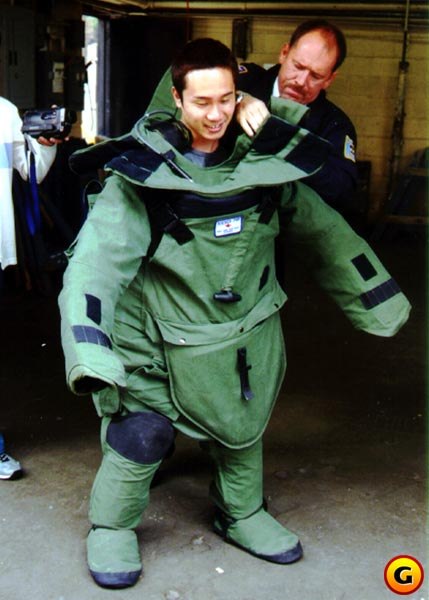
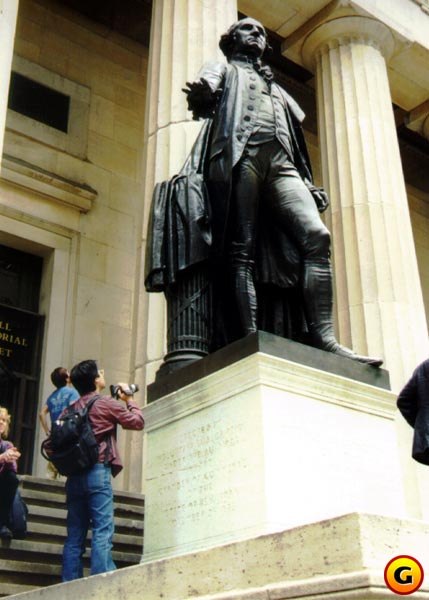
In 1999 destruction wasn't on the team's mind; instead, they were thinking more about creation and how they were going to bring Kojima's vision to life. As a first step, after E3 in 1999 the team went on a research trip to New York City. There, the team visited landmarks such as the George Washington Bridge, Federal Hall, and even a New York City police station, where Shinkawa dressed up in a bomb suit, a piece of equipment that later served as the inspiration for the design of the game's Fatman character.
Back in Japan, the programming team was beginning to think about how it could bring the world of Metal Gear Solid 2 to life on Sony's PlayStation 2 hardware. In late 1999 the team received a development kit from Sony. Uehara says the team never quite believed Sony's statements that the PS2 and its Emotion Engine were a dream machine. "We knew it was only a computer," he says. "We honestly tried not to have huge imaginations that we knew couldn't be realized in the end. Instead, we took a wait-and-see approach and hoped for the best."
A group of programmers experiment with the PlayStation 2 development kit. When the development kit arrived, the team began what would amount to six weeks of experimentation with the hardware--programmers, sound technicians, and artists vetted the machine by putting it through rigorous tests. "We had our programmer Mr. Takabe spend a month researching the machine and experimenting with it," explains Matsuhana, assistant director. After the experimentation was done, Matsuhana spent a week interviewing everyone on the team to determine how fast they could build a game. "By the end of 1999 I had determined that we could finish a game in 2001--appropriately enough the year of the snake," he reminds. So a target date was set: a new Metal Gear for 2001.
As the programming team spent additional time testing out the PlayStation 2, Kojima began the long and arduous process of creating the scriptment, a massive document that would, when complete, detail every scene and line of dialogue in the game.

Out with the LEGO!
Aware of the limits of the PlayStation 2, Kojima turned to writing the scriptment. "The scriptment really involves two senses of plot," he says. "First is the plot in terms of the story, and second is the plot in terms of the actual gameplay. I don't think they can exist without each other--they have to be written and conceived together."
"I have to conceive of a scene in terms of the plot and the gameplay, but I also have to know if it is technically possible to pull it off." -Hideo Kojima
For a game as massive as Metal Gear Solid 2, Kojima plays what he calls "catch-ball" with his collaborator Mr. Fukushima and the entire development staff. While Kojima is the final arbiter of what goes in the game, his collaborative "catch-ball" process involves all the core members of the team. "I have to conceive of a scene in terms of the plot and the gameplay, but I also have to know if it is technically possible to pull it off," he explains. One such scene that he initially conceived but later realized would not be possible involved a massive flood sequence. "I had this scene of a flood with people being washed away," he remembers. "I wanted to ask the player to swim through this flood and make sure they don't drown. But it didn't happen, largely because the technology would have been hard to do."
That's not to say all the sequences in the game were a cakewalk to pull off. In the scriptment Kojima details every visual detail he wants in a sequence. For example, the opening tanker scene in New York is written out in extensive detail in the scriptment. "I will describe whether we want to show all the droplets of water on the person's raincoat and where I want to see fog," he states. Then it is up to the programming team to design the technology needed to pull off such a sequence. "We never tell Mr. Kojima that anything is impossible--we will always give it a try," says Uehara, sounding like he has already been schooled by Kojima about removing 'impossible' from his vocabulary. "But when I read the scriptment for that opening scene--with the list of the ripples, the water, the reflections in the water, the mist--I was very up front with Mr. Kojima and said, 'This is going to be very difficult to do.' But I think we came up with something that is reasonably close to what was in the scriptment."


As the programming team works on realizing some of the visual aspects of the game, Kojima spends a substantial amount of time working with the scenario and design team, a group of about 12 individuals--a significant number of whom are women--to design the actual gameplay. For each scene in the game, Kojima will draw out a detailed map of how the player should move through the area. "For the first game we actually built the levels with LEGO blocks and then ran a little camera through the LEGO to understand the player perspective," he says. "But this game got so complicated with multiple floors that we had to do things in CGI and actually act out some scenarios in the office."
By early 2000 the team in Tokyo was making significant progress. The scriptment was complete, even though Kojima admits the final scriptment was nearly cut in half from the original version. Best of all, the team was beginning to reach a point where it could bring the game up on a TV monitor and see certain test sequences brought to life, including backgrounds, enemies, and items.
The initial tests were impressive; the game was starting to look like an action movie. So it made sense that Kojima's next idea was to call a famous Hollywood film composer and ask him to help bring the audio portion of the game to life.

This Is the Guy
Just as the graphics in Metal Gear Solid 2 look light years ahead of what the team was able to do for the series' first incarnation 14 years ago, the sound effects and music have progressed from telephone-keypad-like beeps to full-on symphony orchestra sonic landscapes. Kojima, being the film buff that he is, is often right on top of all the latest Hollywood action movies, so much so that he frequently attends the cinema with Muraoka, the manager and sound director of Konami's sound design section. "We often see movies together--it is our pastime," explains Muraoka, who goes on to say that Kojima is always looking at films from the perspective of a director, whereas he himself is just looking to be entertained. Do he and Kojima often disagree about films? "Yes. Whenever I'm about to say, 'I really liked this movie,' Mr. Kojima always says, 'That movie sucked,' and I feel like I can't really tell him what I think."
While they may have different tastes in movies--the last film they saw was Tomb Raider (thumbs up from Kojima, thumbs down from Muraoka), the two ended up agreeing on one thing after seeing the 1998 Chow Yun-Fat film The Replacement Killers: The music in the movie was fantastic. "I just loved the modern percussion sound by Harry Gregson-Williams," says Kojima. "As soon as we saw that movie I turned to Mr. Muraoka and said, 'This is the guy for Metal Gear Solid 2.'"
Of course you might think firming up the services of one of Hollywood's busiest composers, who has worked on everything from the recently released Spy Game to Shrek to The Rock, might be a bit of a challenge, even for a revered game creator such as Kojima. Think again, because Kojima and Muraoka already had a plan. Besides telling Rika Muranaka, the writer of the ending themes for MGS1 and 2, to contact Gregson-Williams, Kojima started to put together a CD of his favorite Harry Gregson-Williams music. Within days he shipped the CD off to the composer at his nondescript Santa Monica, California, studio, Media Ventures, and awaited a response.
"So this one day I received this odd home-burnt CD in the mail," Gregson-Williams says as he sits in his studio the day after finishing work on Spy Game. "The CD had all my music on it, but it was almost creepy. It had music on there from movies where, at least to my knowledge, a soundtrack has never been released. There was even music on there from films in which I had collaborated with other composers. Somehow the person who put this CD together knew exactly which music in those movies was scored by me." Gregson-Williams says he was inordinately impressed by the CD author's ability to pick out his music. "I really couldn't say no to this project after that."

A Little More Sneaky, Please
Taking on the project in early 2000 for six weeks of work, Gregson-Williams was excited by the idea of working on a game, even though he doesn't own a PlayStation and has played only one game: Pong. "Just about everything I do is conditioned by the pictures in a movie--every move and shake in the music depends on what's on the screen," he says. "For this project it was different. I had no visuals at all. I didn't see the game at all. They just gave me some adjectives for themes, and I composed off of those words."
With the team in Tokyo and Gregson-Williams in Santa Monica, communication was handled over e-mail and by Gregson-Williams sending his music to Japan in MP3 format. "I really just started writing music to the adjectives they gave me," he says, skimming down a CD of music for the game with a track listing that goes from "Sneaky 1" to "Sneaky 6." "I don't know who is going to name all these 'sneaky' songs for the soundtrack CD, but it's definitely not me," he says with a laugh.
Gregson-Williams would write down adjectives on Post-it notes and then put those notes above his computer console. He started with the adjective sneaky and then moved on to others such as noble, full-on action, and heroic. These pods of music would typically be written in one-minute segments and sent to the team in Japan. While it might be suggested that the use of adjectives was the only way to communicate across a language barrier, Muraoka says the limited communication was by design and not due to language issues. "If we gave him too-specific instructions it would no longer be his music, and we wanted Harry's music as he does it all the time," he says.
While Gregson-Williams' suites of adjective-inspired music were set to be used for the main game, the team in Japan also asked him to compose a special melodic piece that would be used for a trailer at E3 2000 in Los Angeles, the official unveiling of the project. As Gregson-Williams tirelessly worked to complete this theme, the team back in Tokyo was furiously trying to come up with the visuals to show at E3 2000.

Nine Minutes of Magic
In early April 2000, Matsuhana knew that E3 was only six weeks away. E3 was an important milestone for the team, especially given that Metal Gear Solid's debut at E3 1997 put that game on the map. "Mr. Kojima knew that E3 2000 was the perfect time to debut the game to the public," Matsuhana recalls while sitting in a conference room at Konami. "It was, without question, very important that we had a trailer ready. But to be honest, every day leading up to the show I was worried we wouldn't have something ready to show."
Kojima's idea was to debut Metal Gear Solid 2 with a nine-minute video trailer that would show scene after scene of action from the game's tanker sequence. Keen on making sure Raiden was kept a secret, Kojima personally started to record and edit the footage for the trailer, much of it taken from what the team calls a polygon demo, known to most North American gamers as an in-game cinematic or cutscene. By mid-April the entire team saw the first finished polygon demo, a short sequence that showed Solid Snake jumping off the George Washington Bridge and landing on the tanker. "As soon as I saw that polygon demo I said, 'Wow! This is going to be a great trailer.' We definitely had something special," remembers Shinkawa.
At least they hoped they were going to have something special--that is, if they could pull together nine minutes of great footage in time for the E3 deadline. "A game trailer like the one for MGS2 is very hard to put together," explains Matsuhana. "You have to rely on the AI to do certain things. A movie director can just tell an actor to walk in a certain direction, but a lot of our time was spent just shooting bullets in certain directions and hoping the enemies would react in a certain way." Time and again, Kojima would attempt to create breathtaking action scenes literally by chance encounters. "Eventually we realized it would actually be faster to go in and reprogram some of the enemy AI for the trailer so the soldiers would do exactly what we wanted them to do," admits Matsuhana.
"Everyday leading up to the show I was worried we wouldn't have something ready to show." -Mr. Matsuhana on the E3 2000 show
As the trailer started to coalesce, the team in Japan informed Konami of America that it would be bringing a nine-minute trailer to E3. At first, the executives in America were worried that such a long trailer would overshadow the rest of the company's product lineup for 2000. "We said to Kojima, 'Wait a minute, our whole reel is only 30 minutes, and you want to take up a third of it?'" recalls Ken Ogasawara, the American localization producer on the project. Of course this reaction was knee-jerk and no one had any idea of how amazing the trailer would end up being when complete. In fact, no one outside of the development offices in Japan had seen anything related to Metal Gear Solid 2. "We hadn't seen a video, a screenshot, a logo, or anything on the game until a week before E3 last year," explains Jason Enos in Konami's US marketing department.
Part of the reason Kojima had been holding the game so close to his chest had to do with his fears about how it would be received by the public. "I know this will sound trite in retrospect, but honestly we had no idea what other companies were doing for the PS2," he recollects. "We weren't very confident about how we should present our visuals, especially since we put more focus on the environment and the effects than the number of polygons in the characters." Although Kojima was desperately trying to find out what his competitors were up to, he says that even weeks before E3 the team had no idea how their work compared to that of their contemporaries. "I was just so scared because I didn't know what the new Resident Evil or Final Fantasy or Tomb Raider games were going to look like."
Matsuhana goes as far as to say that the days leading up to E3 2000 were some of the darkest for the team--a complete low point in development. "I know people will read this and say, 'How could they not have been excited about the trailer?'" he admits. "But when we started to see screenshots leak out of competitors' products in the days leading up to E3, we became very worried that the public wouldn't like the direction we were taking the game."
But soon there would be no point in worrying--on May 8, Kojima boarded a flight from Narita Airport to Los Angeles with a nine-minute videotape firmly tucked into his suitcase. On the plane he spent time listening again and again to a minidisc tape made by Scott Dolph, the only English-speaking employee in Konami's Ebisu office. On the disc, Dolph recorded a short speech that Kojima was trying to learn in English. Two days later, he would give that speech in front of a packed audience and unveil Metal Gear Solid 2 to the world.

Game of the Show
May 10, 2000, is a day that will surely stand out in the minds of many gamers, not to mention the 150 journalists who packed a screening room at Universal Studios in Los Angeles at 5:00pm for the unveiling of Metal Gear Solid 2. After a long day of press conferences, including Sony's massive event announcing the PS2 launch date and price, many felt that Konami had saved the best for last. Promptly at 5:00pm Kojima got up in front of the crowd and began his remarks. At one point he looked up from the lectern and said, "I'm back!" to cheers from the crowd. The lights dimmed and a green ratings card came up on the screen, just like those seen before movie trailers. This one said, "This Game Is Approved for All Gamers."
Sclash - Console Release Date Trailer Kingdom Come: Deliverance 2 - Official Cinematic Announcement Trailer Stellar Blade - BIBI ‘Eve’ Official Music Video Trailer | PS5 Apex Legends: Urban Assault Collection Event Trailer Total War: WARHAMMER III - Elspeth von Draken Gameplay Showcase Genshin Impact - "Arlecchino: Sleep in Peace" | Official Character Teaser Minecraft – Kung Fu Panda DLC Trailer Potionomics: Masterwork Edition - Official Announcement Trailer Snowbreak: Containment Zone - "Gradient of Souls" Version Trailer Harold Halibut GameSpot Video Review Nancy Drew: Mystery of the Seven Keys | World Premiere Official Trailer Modern Warfare III & Warzone - Official Cheech & Chong Bundle Gameplay Trailer
Please enter your date of birth to view this video
By clicking 'enter', you agree to GameSpot's
Terms of Use and Privacy Policy
Over the next nine minutes a mesmerizing array of images appeared on the screen. The melodic Gregson-Williams theme powered through the speakers, and the crowd witnessed action sequences that looked like they had been literally lifted out of movies such as The Rock or a James Bond film. The tanker sequence that Kojima had written up in the scriptment was the main focus of the trailer--the puddles were there, as were the wind effects, the reflections, and the stunning animations. When Snake's archenemy, Revolver Ocelot, appeared in the trailer, the crowd cheered; a close-up of Solid Snake's face only further keyed up the audience. Before long, some journalists wondered just how long the trailer could go on--it just looked too good, too polished, and too powerful to be a real game. When the trailer was over and the MGS2 logo came up, the crowd burst into applause and proceeded to give Kojima a standing ovation. The game could not have received a warmer reception.
During E3, Konami showed the nine-minute trailer on a large video wall at its booth at the top of every hour. At 15 minutes before the hour the audience would grow so large that the E3 staff became concerned that the huge crowds posed a fire hazard. Even developers in the crowd would watch the trailer again and again and not believe what they were seeing on the screen.
"You just knew you were seeing the high-water mark for games." - 3D Realms' George BroussardGeorge Broussard of 3D Realms Entertainment, creator of Duke Nukem, was one of those blown away by the trailer. "You just knew you were seeing the high-water mark for games. No matter how experienced a developer you are, you look at Metal Gear and say, 'Wow.'" Jason Rubin of fellow top-flight PS2 developer Naughty Dog echoes Broussard's sentiments: "We are continually inspired by the way in which Mr. Kojima has slowly mastered the art of mixing storytelling and gameplay into a seamless game/movie experience." Even Gregson-Williams was dazzled when he finally saw his music combined with the work done in Japan. "It was very nearly a film," he remembers. "It was truly breathtaking to see my music hooked up to those visuals."

On Top of the World
Metal Gear Solid 2 had become the game of the show. While Kojima insisted that the video trailer represented in-game footage, some cynics suggested the images were too good to be true--there was no way a game could actually look and play like that. But there was no question that the trailer was impressive. In the span of a few short days Metal Gear Solid 2 had quickly become the most anticipated PlayStation 2 game--and it was still at least 18 months away from release.
Ready to celebrate, Kojima and the team made it a point to try some karaoke, a secret pastime of the team. Kojima enjoys singing falsetto. "I don't think people realize how much Mr. Kojima loves karaoke," points out Matsuhana, who sheepishly admits that even he has been known to enjoy a karaoke Billy Joel song once in a while. "Mr. Kojima and Scott Dolph are huge Earth, Wind & Fire fans, and Mr. Kojima also immensely enjoys L'Arc en Ciel, the Japanese rock group who did the ending theme for Final Fantasy: The Spirits Within," states Matsuhana. Singing karaoke was the ultimate release for the team--a chance to celebrate what had been accomplished.
"I remember sitting on that plane and just saying to myself quietly, 'I need to keep my cool here.'"-Hideo Kojima on the success of the E3 trailer
Flying back to Tokyo after the show, Kojima was on top of the world. "Those few days were the best time of my life, to be honest," he recalls with a smile on his face, as if to suggest the pressure of the final hours has made him almost forget how great it felt a year ago. "I remember sitting on that plane and just saying to myself quietly, 'I need to keep my cool here. I need to not get too excited or consider myself a star. I need to maintain a level of humbleness.'" While Metal Gear Solid earned him respect and a following of hard-core fans, Metal Gear Solid 2's trailer served as the spark that ignited a frenzy that elevated Kojima to a level on par with Mario creator Shigeru Miyamoto.
Kojima was feeling pretty good about himself when he got back to Tokyo. In fact, he couldn't wait to tell his wife about how he had the best few days in his life. Arriving at his house in Tokyo, Kojima greeted his wife and began to tell her about E3. "I told her how great everything went, and she just sort of said, 'Oh really? That's nice,'" he recalls with a laugh. "It was really sad because I couldn't even begin to share my true level of excitement with her. I really wish she would have been there to see the reaction at E3."
Perhaps his wife's reaction was exactly what Kojima needed--a humbling experience to make him realize one thing: The game was far from done. While E3 2000 was a high point for the team, the pressure would only grow more intense. From now on, all eyes would turn to see if Kojima and his team could make a game that lived up to the hype and acclaim bestowed upon it.

The Power of an Idea
Back from E3, Kojima and key members of the team, such as Shinkawa, Matsuhana, and Uehara, decided to leave Tokyo and spend a few days in late June at a Konami training facility 90 minutes outside of town. Here, the key members of the team would nail down the final decisions about how to proceed with the game. First, a decision was made to create a demonstration version of the product for release with Zone of the Enders, another Kojima-produced title that would ship in Japan at the end of the year and in the US in early 2001.
The meeting in rural Tokyo was a good way for the group to gear up for the second-half of the game's production schedule, which included finishing the demo by the end of the year. While executing the existing scriptment was a priority, the team never stopped innovating and was always brainstorming new last-minute ideas. For example, Kojima was coming up with new ideas for the game on a daily basis. "He's really a very humorous person," says Uehara. "He came to me one day last summer and said, 'Let's do something with girlie magazines and tossing them on the floor. I want the soldiers to walk by and then pick them up and go, "Wow!"'" Besides being funny, the feature would enhance gameplay by giving the player another way to distract the guards. "It took us about three days to put that feature in, but it was well worth it," believes Uehara.
Other employees contributed ideas as well--or more accurately, were required to contribute ideas on a daily basis. "Each person on the team has an idea book," explains Matsuhana. "You have to write down at least one idea a day in this book. I collect these books from everyone, and then Mr. Kojima and I review them." For most of the employees on the team, the ultimate validation comes when Kojima decides to pen a response in their idea book. "It's always a fun part of the day when I return the idea books," Matsuhana admits. "Everyone rushes to open their book to see if Mr. Kojima has written them a response. And if there is no response, the team member looks somewhat dejected at first but then is motivated to think of an even better idea for tomorrow."
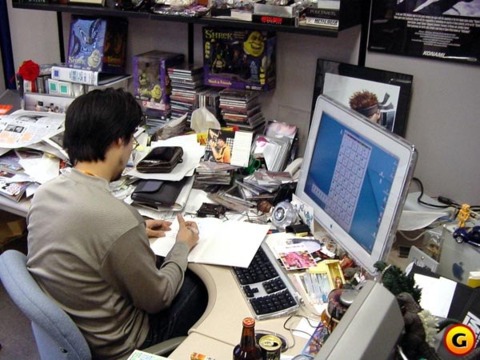
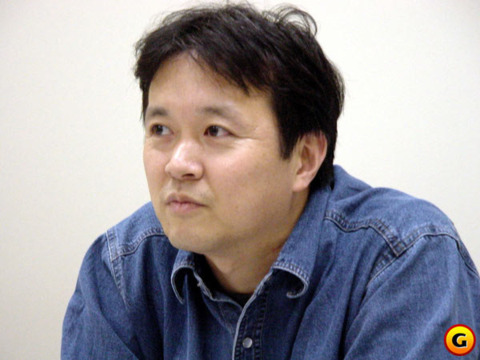
While ideas were flying back and forth between everyone on the development team throughout 2000, the first big deadline came when the demo version was completed in November of 1999. Luckily, the demo was completed right on schedule. But while the demo of the tanker scene was finished on time, there were already signs that the rest of the game was beginning to lag behind. "We finished the tanker demo on time, but there were so many other environments in this game we had been neglecting," says Matsuhana. After the relief of getting the demo out the door subsided, the team was faced with the daunting reality that 2001 was only a few weeks away, and the key building blocks for the full game were not yet complete.
"We started to see all the building blocks for the game and the characters moving in the world," Matsuhana recalls, "but the real problem came when we tried to put together those building blocks. Everything just started to fall apart, and it didn't work correctly--the game wouldn't even load towards the end of 2000." Without the full game engine working properly, the team would be unable to move onto the important testing and tweaking phase of development.
"I really wanted to get to the point where we could start to test the full game's gameplay. But we were nowhere near that point before the holidays last year," says Matsuhana. "Although it is my job to cheer everyone else up on the team, at the end of 2000 I really needed some cheering up myself. I was not looking forward to 2001."
Aware of the concerns about the game's progress, the team still decided to take time off over Christmas, their last real vacation before entering serious crunch mode. But things would only get worse in January, when Kojima and Matsuhana would make a startling discovery that would confirm their worst fears about the project.

Desperately Behind
"If I wasn't a manager of the company I would probably be creating all these weird games." -Hideo Kojima
Returning from their holiday vacations, the team knew that 2001 would be a tough year for everyone, especially given MGS2's epic scope and the promise of a late-2001 release. Given Matsuhana's concern about the state of the project, he proposed to Kojima a method of checking the team's progress. "What I wanted to do was compare our progress on MGS2 to its predecessor," he recollects. "So we'd say, 'OK, MGS2 is 10 months from release--where were we 10 months before the release of the previous game?'" Kojima liked the idea, thinking it would provide a concrete way of determining how much was left to do.
Unfortunately, neither Matsuhana nor Kojima liked the result of their study.
In 2001 Mr. Kojima grew concerned that the game would not be finished in time. "I spent about a week doing a comparison and contrast between the projects," says Matsuhana. "And I really didn't like the answer I came up with. We realized we were desperately behind with Metal Gear Solid 2." Asked exactly how far behind they were, Matsuhana is embarrassed and just repeats the phrase "very desperately behind." To put it in context, he later says that he was "certain the game would not be released in 2001. We were going to do everything we could to finish the game, but the prospects were very grim at the start of the year."
Potentially missing the 2001 release date was of great concern to Kojima because, in addition to being the game's creator, he is also the vice president of Konami Computer Entertainment Japan. Wearing both business and creative hats means that Kojima is well aware of the possible business implications of missing a key holiday release date. In fact, Kojima says that being the vice president often forces him to think of his games in terms of their sales potential. "I have so many weird ideas," he says, "but I have to make sure my ideas will sell too. If I wasn't a manager of the company, I would probably be creating all these weird games. But as a manager I can't allow it." Speaking of weird ideas, Kojima once had what he thought was a great concept: designing a product where the player would be forced to buy a new copy of the game every time the player character died. "As I said, I have some very impractical ideas," he admits with a grin.
Impractical or not, the team was going to try its best to ensure a 2001 release date. Marketing and PR seemed to already be in the bag, thanks partly to the March release of the playable demo version in the US, which silenced those doubters who claimed the trailer footage couldn't have been actual in-game footage. But even Kojima wasn't satisfied with the existing buzz. He decided he wanted to return to E3 2001 with a new trailer of the game, although he once again elected to not allow any playable copies of the full game to be shown.
No doubt the decision to carefully inform the public about the game's content via precut trailers stemmed from Kojima's initial directive that Raiden be kept an absolute secret until the day of release. That's not an easy thing to do when Raiden is the playable character for the majority of the game. But Kojima kept true to his word, not even informing those at Konami of America about Raiden's existence. "At E3 this year the word 'Raiden' wasn't even part of my vocabulary," explains Konami's Jason Enos.
Fans of the series wouldn't be finding out about Raiden anytime soon either--the E3 2001 trailer would only further mislead them and be edited in a way that led to months of speculation about the fate of Solid Snake.

Submerging
Kojima stood up in front of the audience at Sony's E3 2001 press conference and kept his remarks brief. "I just got off the plane from Japan," he said, "and I bring you the new Metal Gear Solid 2 trailer." Just like the trailer the year before, this trailer included nearly 10 minutes of new action sequences from the game. But given that so much of the tanker sequence had been shown off in the first demo, the team was faced with a difficult decision: How do we keep Raiden's existence a secret yet also show some of the fantastic new action sequences from the later parts of the game?
Sclash - Console Release Date Trailer Kingdom Come: Deliverance 2 - Official Cinematic Announcement Trailer Stellar Blade - BIBI ‘Eve’ Official Music Video Trailer | PS5 Apex Legends: Urban Assault Collection Event Trailer Total War: WARHAMMER III - Elspeth von Draken Gameplay Showcase Genshin Impact - "Arlecchino: Sleep in Peace" | Official Character Teaser Minecraft – Kung Fu Panda DLC Trailer Potionomics: Masterwork Edition - Official Announcement Trailer Snowbreak: Containment Zone - "Gradient of Souls" Version Trailer Harold Halibut GameSpot Video Review Nancy Drew: Mystery of the Seven Keys | World Premiere Official Trailer Modern Warfare III & Warzone - Official Cheech & Chong Bundle Gameplay Trailer
Please enter your date of birth to view this video
By clicking 'enter', you agree to GameSpot's
Terms of Use and Privacy Policy
A creative solution was devised. Parts of the game would actually be modified to include them in the E3 trailer. So, what appeared in the trailer as a fight between Snake and Fortune was, in actuality, a duel between Raiden and Fortune where Kojima swapped in Snake for Raiden. Likewise, the trailer showed a sequence involving a Harrier jet over the George Washington Bridge in New York. While a similar sequence existed in the real game, it actually took place in a completely different environment that had yet to be revealed to anyone outside of the Konami development office.
"He wanted us to wonder, 'Are we really seeing everything there is to be told or is something being edited out?'" -Producer Ken Ogasawara on the E3 trailers
Reflecting on his trailers that some may say misled gamers, Kojima seems completely fine with his sneaky tactics. "The whole E3 thing with the footage was part of the experience that leads up to playing the game," he suggests. And while fans didn't know about the character swapping at the time of E3, most did start to wonder about a sequence that apparently showed Solid Snake drowning in the waters off New York. Fans were left to wonder, "Is Snake dead?"
This text at the end of the trailer signaled the start of the team's 6-month submerge period. US producer Ken Ogasawara thinks the speculation about the game created by the trailers was right in keeping with Kojima's message and strategy for the sequel. "One of the themes in the game is about digital information," he explains. "There is so much out there that we never know what is real or not. And Kojima was trying to hammer that home with all the trailers and speculation. He wanted us to wonder, 'Are we really seeing everything there is to be told, or is something being edited out?'"
It turned out there was a lot being edited out as part of a wide-ranging and calculated misinformation campaign on the part of Kojima. But another campaign would soon be set out: a decision by Kojima to completely shut his team off from the outside world until the game was complete. No doubt fueled by Kojima's private concern that the game was behind schedule, the last frames of the E3 2001 trailer said "MGS2 SUBMERGES--WINTER 2001." This was Kojima's subtle way of introducing his "submerge" media strategy, a complete and total communications and media blackout that would extend from E3 until the launch of the game. There would be no press interviews, no previews, and no new information about the game released until it arrived on store shelves. While public statements about the submerge strategy put a positive spin on it as a way for Kojima to concentrate on the game, the truth was much darker: Submerge was absolutely necessary if the team had any hope of finishing the game in 2001.
It's not surprising that flying back from E3 2001 was a much different experience for Kojima than it was the year before. Asked how he felt after E3 2001 compared with E3 2000, Kojima says there really is no comparison. "This year we were still saying the game was coming in November," he remembers, "but on my way back to Tokyo I was very scared. We had started our submerge strategy, and I knew that the next few months would not be fun. It still looked very bleak for a 2001 release--to be honest, in my heart of hearts I thought a 2001 release would be impossible."
Although Kojima returned to Tokyo from Los Angeles in mid-May, some of the team would soon fly back across the Pacific with an 800-page script in tow, ready to record the voices for the English version of the game--a crucial step on the road to finishing the product.

Mum's the Word
If one aspect helped define the character of Snake more than anything else in the original Metal Gear Solid, it was his gruff voice, created by David Hayter, a well-known voice-over actor who also wrote the script for the X-Men movie and is currently at work on Watchmen and X-Men 2. According to Hayter, the way Snake sounds in the game was an accident. "I've never told anyone this before, but the voice I auditioned for Snake is actually different than the voice we ended up using," he says at home in Los Angeles. "I honestly couldn't remember what voice I had auditioned with when I went to do the real job. And when we reviewed the audition tape, we found that Snake initially sounded a lot like me--but for some reason I made his voice a lot rougher for the real deal."
The real deal would happen again over the summer months of 2001, as Hayter would spend more than three weeks reading through some 800 pages of dialogue in a Los Angeles recording studio. The recording sessions happened under the voice direction of Kris Zimmerman and were supervised by Konami's Scott Dolph, who, in addition to being the inspiration for the game's Commander Scott Dolph character, also had a hand in translating all the dialogue from Japanese to English.
Hayter says that he was always keen to come back and reprise his role as Snake, even though this summer he was in the midst of writing four different screenplays. "I love this character, and it's always fun when people find out I'm the voice of Snake," Hayter explains. "I don't look like him, so you wouldn't know it on the street, but sometimes people find out and get incredibly excited." Such an occurrence happened recently to Hayter when his friend James Van Der Beek (Dawson's Creek) brought his brother into town. "We were all out at a bar, and when I said I did the voice of Snake, his brother just freaked out. He wanted me to talk as Snake for the rest of the night," remembers Hayter. "That was a great moment for me."
Hayter spent a significant amount of time in the studio, but for most of the time he was joined by a new member of the cast: Quinton Flynn, the voice of Raiden. Flynn is a veteran actor who has voiced characters such as Johnny Quest and Timon in the TV version of Disney's The Lion King. Both Hayter and Flynn admit they had no idea about Raiden's extensive role in the game when they first showed up for work on the sequel. "No one told me ahead of time about Raiden," admits Hayter. "But I sort of figured out eventually that I was coaching Quinton's character along." Hayter says that even now he isn't sure how much Snake is in the game. But he plans to find out soon when he plays his copy--he claims to have completed the first MGS game five times over.
For Flynn, joining the project as Raiden was a great opportunity for a meaty role--the only problem was that he couldn't tell anyone that he had landed the gig. "I couldn't tell anyone I was playing Raiden," he recalls. "But a few days into the project they did say to me, 'Quinton, mum's the word, but you are kind of the new Snake.' That was pretty exciting to hear."
Flynn says he immensely enjoyed the process of working in the studio with Konami and Hayter. In fact, he goes as far as to say that Metal Gear Solid 2 is his favorite voice-over project to date. "Through Raiden I got to go through the journey of life we all go through--making choices and decisions and sometimes finding out that those choices aren't where we want to go," he says. "I definitely associated with Raiden's voyage and was amazed that a video game written in Japanese could have this strong a script. It really felt like a motion picture project to me."
By mid-July the team had finished recording all the key dialogue for the English version of the game. Dolph immediately said good-bye to the voice cast and returned to Tokyo with the DAT tapes, ready to prepare the dialogue for insertion into the game. Will the actors meet up again in the studio? While neither Flynn nor Hayter is signed on to do additional Metal Gear games, both say they would be happy to reprise their roles if the series continues.
But continuing the series was not on Kojima's mind in the summer of 2001--he was more concerned with figuring out if it was possible to finish this game before the holidays. With 2001 more than halfway over and the game still lagging behind schedule, Matsuhana and Kojima made an important decision: More team members would be needed if the game had a hope of coming out in 2001.

All in the Family
"One way to solve a production problem is to bring on more people," matter-of-factly states Matsuhana. A core team of 35 to 40 employees had been working on the game since 1999, but during the final months of development the team would balloon to 70 members, most of whom were brought over from other development teams at Konami. "It negatively affected the other projects, but it was a huge help to us," believes Matsuhana, who says the addition of the extra employees is what really allowed the team to make a 2001 release possible.
Although the team would grow to be 70 members strong, everyone inside the development office still tried to adhere to a process dubbed "Kojima-style." This is a familial game-development approach where everyone is encouraged to collaborate and discuss ideas with each other. "Back when we were a team of 10 working on Policenauts, we were a family," says Uehara. "Today, we try very hard to keep that family feeling and are always talking to each other. You have to be an extrovert to be on our team." This open style of development is further evidenced by the large development room where no walls separate any of the developers.
"A natural high starts to kick in when you start to work with your coworkers into the night." -Mr. Matsuhana on crunch mode
Matsuhana explains that it is his job to "control everyone's emotional level" on the team, even though he admits it is hard to do with upward of 70 members. Developing a game 18 hours a day, seven days a week can take its toll on anyone, but Matsuhana believes crunch mode is when the bond between the team can actually grow strongest. "A natural high starts to kick in when you start to work with your coworkers into the night," he says. But there are still sacrifices--Matsuhana's second son was born in February, and he hasn't had the chance to see him much. When asked what his wife thinks of his long hours, he laughs and puts his index fingers above his head as if to mimic the Devil's horns.
Kojima himself knows firsthand what it feels like for Matsuhana and the other employees with families. To lessen the time he spends away from his family, Kojima often brings his young son into the office during the final months of development--that is, if his son promises not to break anything. "When I come into the office on Saturdays or Sundays I try to bring my son with me," he says. "But I have to be careful. Once I brought him into the motion-capture studio and he almost damaged quite a bit of equipment." Apparently Kojima's son, who takes karate lessons, became interested in acting out his own action scene in the motion-capture studio. "There was this scene we were filming where an actor was flinging a blade," Kojima recalls with a laugh. "Well, when the scene was over my son picked up the stick and started poking the actor and the sensors."
Even if his son is putting expensive equipment at risk, Shinkawa says that Kojima's son is clearly very near and dear to his heart. "He is a very loving father--we are always hearing about how 'my son did this' and 'my son did that,'" says Shinkawa. "I don't think it's any surprise that the whole theme of the game involves passing things on to future generations. That is Kojima speaking as a father about wanting to pass things on to his son."
The close atmosphere in the office even extends after hours. Often the team will get together late at night to discuss progress on the game and the general state of their lives. "There's this local Ramen noodle placed named Chorori," says Matsuhana. "It's open until 4am and we will often go there at 1am if we are working late. We will eat there, and, while we probably shouldn't be doing this, we also have a few beers and talk about our personal lives and what is going on inside our minds." So, even as the pressure mounts, the team makes sure it has time to let off steam and build relationships with each other.
But as the final weeks of development approach, the team knows that even late-night trips to Chorori will be out of the question. With the end of summer setting in, the team now has literally only a few precious weeks to finalize the game's many scenarios and polygon demos.
Tempting fate and trying to do the impossible is never easy--and it will just get tougher when an unthinkable tragedy strikes during the final days of development.

So Close yet so Far
With the team still busy creating the actual content for the game in late summer, Kojima was the only person who actually had time to play through his game from start to finish and concentrate on the tweaking and tuning process. "Normally a few months before a game is completed the entire team should be able to play through it," he remarks. "Unfortunately that was impossible given this schedule. Everyone was too busy working on their specific parts of the game."
Each day in August, Kojima locked himself into a small conference room at Konami. There, he feverishly played through the game again and again, trying to figure out how closely it resembled his original scriptment. At the same time, he began thinking of little bonuses and surprise features to hide in the game. "There are going to be fewer bonuses in the US version than I would like because of the lack of time," he says. "But the good news is that I am going to add a lot more bonuses to the Japanese version. You see, sometimes it pays to wait."
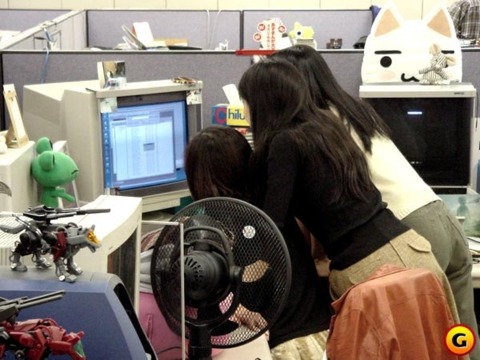
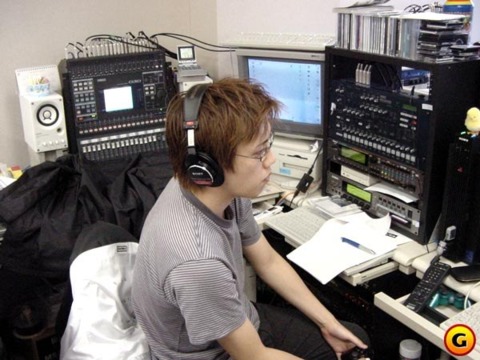
For many reasons Kojima would have preferred to wait to finish the game, but he realized that releasing it before the holidays would be ideal--he knew if he didn't have a release date he would forever be tweaking and tinkering. "If I had to boil down our strategy of making games, it's really just the process of creating, checking, playing, and destroying, and so on," he suggests. "This back and forth is what makes a great game. Unfortunately we have had to cut down on the number of times we go back and forth if we hope to finish the game this year. But I still know it will be a great game when it's done."
Still, Kojima was adamant that corners not be cut unless they absolutely had to be--he wasn't going to spend three years of hard work and an estimated $10 million budget on a game that would be pushed out the door. "In August I started to see the game finally coming together," he remembers. "But I also knew we were going to need as much time as possible to make sure it was great."
"The message was that unless we were granted another week in development time we were going to have to delay the game." -Scott Dolph on his August e-mail to Konami
So a tough decision was made. In mid-August, Kojima instructed Scott Dolph to e-mail Konami of America with an urgent message: The game won't be able to make a planned November 13 release unless the team is given more time in development. While Konami had originally scheduled to start duplication of the game in early September, Kojima wanted Konami to speed up the duplication process, thus giving the team more time in development while still maintaining the same release date. "I remember sending that e-mail and making it very stern and clear," says Dolph. "The message was that unless we were granted another week in development time we were going to have to delay the game."
Word came back from Konami US that another week would be added to the development timetable--the first submission of Metal Gear Solid 2 was now scheduled for Friday, September 14, 2001. While the extra week in development gave the team some breathing room, there was no question that the first few weeks of September would involve countless hours of testing and tweaking. Kojima would have to put his entire life on hold--there would be no more movies with Muraoka and certainly no karaoke for the time being. As Earth, Wind & Fire put it, there would be no dancing in September…at least not yet.
As September 14 approached, the team worked tirelessly to complete the game. "Things were really coming together, and barring any unforeseen circumstances, we thought we were finally right on schedule," says Matsuhana. Unfortunately, the most unthinkable of unforeseen events would strike the United States on September 11. When news reached Japan of the terror attack, it was already September 12--only two days before the first submission was due.
Besides being shocked at the events unfolding in the United States, the developers immediately worried about how the unfolding tragedy might impact their game. After all, the majority of the game is set around New York City. "As soon as those terrible events occurred, we felt it necessary to make some very last-minute changes to the game," says Matsuhana. For a team already under intense pressure, having to retool certain sections of the game was the last thing it needed with only 48 hours to go before the first submission. Now, what could have been a peaceful end to development would end up being a frantic race to the finish line.

The Reemergence
Matsuhana admits that the team did make some last-minute changes to the game because of the events of September 11, although he elected not to go into specific details about what was changed. "There were only a few things we could or couldn't do to change the game," he says as he sits in the Konami conference room. "But please don't think we compromised the game in any way by saying, 'Well, since we only have a few days we aren't going to change what we should.' That wasn't our mentality. We did everything we could do to change the game to reflect what happened in New York."
The last-minute changes may have made the hectic final days that much more intense, but the team was still able to submit its first candidate for the final version on September 14. This virtually complete version was then extensively tested for the next few weeks, all leading up to Friday, September 28, which was planned as the final day of development before MGS2 was to be sent off to the duplication facility.
On the last day of development the team is clearly tired--in fact, some programmers have been working so hard that their daily routine consists of programming until they get tired and then putting their heads down on their desks to sleep. A few hours later they wake up, only to start programming until they tire and fall asleep again. While the development room is filled with toys and tons of rival game systems, today every available monitor is devoted to playing and testing Metal Gear Solid 2.
PlayStation 2 debug stations are lined up and prepared to test the final version of the game. Collectively, there must be at least 100 different copies of the game running at a time today. In his programming area, Uehara looks tired as he sits at his PC and skims his code to track down a last-minute bug. Beside him are at least eight PS2 machines all standing side by side with hard drives attached--it is faster for the team to copy a new version to a PS2 hard drive than to make a DVD.
Picking up his controller and playing the game, Uehara begins to discuss the enemy artificial intelligence and how it is one of the last issues he has to address. "It has really taken us three years to perfect the enemy movements so they don't look robotic," he explains. But the fact remains that the enemies are robots, and their complicated AI routines can easily break under certain circumstances. "One of the last problems I'm dealing with involves the player pressing a certain button on the control pad for half a second. If a player does this at a certain point in the game, the enemy AI goes berserk and does not respond properly." Uehara says that bug should be fixed soon; after that, the game will almost be finished.
At his desk, Shinkawa puts the finishing touches on the game's environments--for weeks he has been playing through the game to ensure the visuals are up to snuff. "What I will do is stop the action every second during the game to make sure things look just right," he says. "I will manipulate the position of models, their colors, as well as the fog in real time. It's incredibly important because it's really the lighting and the way it is applied that makes a scene look cool."
It is now 5:00 in the morning, and most of the final bugs have been hammered out; Shinkawa finishes making his final adjustments to the look of the game's ending sequence. Most importantly, Uehara finally feels confident enough that the game is done. With a few keystrokes and mouse clicks he starts up the DVD-ROM burner and begins making what will be the version of Metal Gear Solid 2 shipping to 1 million US consumers in a few weeks.
In some ways it is anticlimactic--three years of hard work by a team of 70 is reduced to one silver disc. Uehara stands there watching the green LED light as it flickers to indicate data being written to the DVD. Some of the other employees stand around Uehara and watch--that is, those who haven't already fallen asleep. What were figurative exclamation points above the programmers' heads earlier in the day have turned into zigzagging Zs.
In the morning, the final version will be shipped off to the United States. They finally did it. Metal Gear Solid 2 is gold.

The Kojima Legacy
Unlike the final days of development for most games, the completion of the US version on September 28 was not the end of development for Metal Gear Solid 2--it was only the first of three versions the team needed to complete. The next week, they would begin work on the Japanese version, which would be completed in late October. After that would be the European version, scheduled for release in February 2002.
Still, all those around Kojima admit that he seems much more relaxed now that the US version is on store shelves. In mid-October, Kojima attended the Tokyo Game Show with Matsuhana and other members of the team. Scott Dolph, who acts as Kojima's bodyguard at trade shows, drove Kojima and Matsuhana to TGS--taking Japan's subway was not an option, given that Kojima is often accosted by countless game fans en route to shows. "When I was driving Mr. Kojima to TGS this year, I could tell that he was relieved to get out of the office," recalls Dolph. "He really just seemed to start speaking like he never has before--he seemed so relieved and excited that the US version was done."
A few weeks after returning from TGS, Kojima still has a light cold--he says he has been sick quite frequently since E3 this year. When asked to reflect on what he hopes players will take away from the game now that they can play it, Kojima avoids getting into any type of deep existential discussion. Even though there are serious messages in the game about posterity, memories, privacy, and other issues, Kojima says he doesn't want to further parse what he has expressed through the game's dialogue. "In the game, Raiden asks Snake a few times, 'What am I supposed to do?'" he points out. "And I made sure that Snake's response is always, 'It's up for you to decide.' That is really the message I want to tell players--you need to decide what is important for you to take away from the experience."
Some gamers will no doubt want to take away nothing more from the experience than the hopes of another Metal Gear game coming sooner rather than later. On this front Kojima has good news. "I really think that Metal Gear has to live on in some form," he confesses. "But as I said at the end of Metal Gear Solid, I really think it is time for me to hand the director role over to someone else. I might do the initial planning for the next game but not much more than that." As for whether Raiden will return, Kojima doesn't think so. "Personally I think Raiden is a onetime character," he says. "But if people love him I might reconsider."
To some it might seem shocking that Kojima is thinking of walking away from Metal Gear. He says he has been thinking about his decision for a while and has been consciously trying to prepare the team for his eventual exit. "Throughout this project I have really tried to embody that theme of passing knowledge on to the next generation," he says while reviewing the stack of idea notebooks for the day. "These guys all have great ideas. Hopefully they can take what I have passed on to them and blend it with their own values to create a whole new kind of Metal Gear created by them, not me."
"I'd love to do a game about family relationships and also start looking at doing something online." -Kojima on his future projects
Coming from a man at the helm of such a successful game series, his comments seem rather surprising. After all, why walk away from one of the biggest video game franchises of all time? Isn't this the ultimate dream for an artist--to have his work validated and respected by millions of gamers around the world? Perhaps not. Just as little boys who like to play hide-and-seek know, the challenge of finding a new spot to hide can sometimes be more appealing than sticking to that one good spot you've used for years. Kojima sounds as if he's ready to find a new hiding place. "I really do want to move on to do some new ideas and challenge myself," Kojima explains. "I'd love to do a game about family relationships and also start looking at doing something online."
Hideo Kojima laughs when discussing whether he might return to direct Metal Gear Solid 3. So, does this mean that it's impossible he is going to come back for Metal Gear Solid 3? Kojima laughs, knowing that he has dug himself into a hole. "Well, you know what I think of saying something is impossible," he says with a sheepish grin on his face. "I guess we will have to wait and see."
Got a news tip or want to contact us directly? Email news@gamespot.com


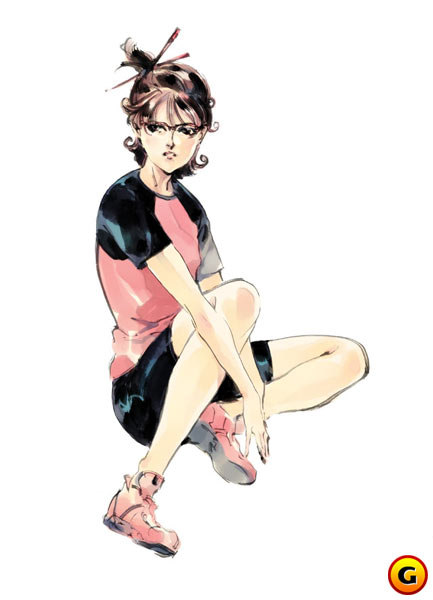
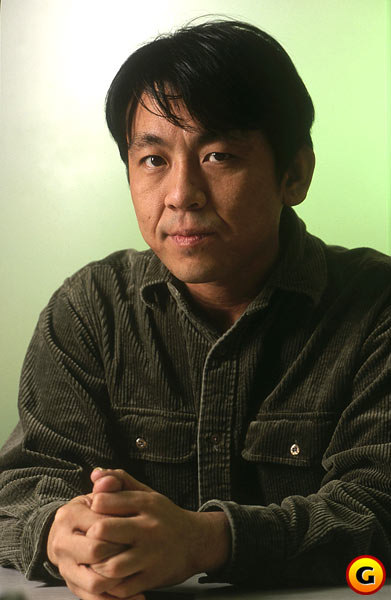
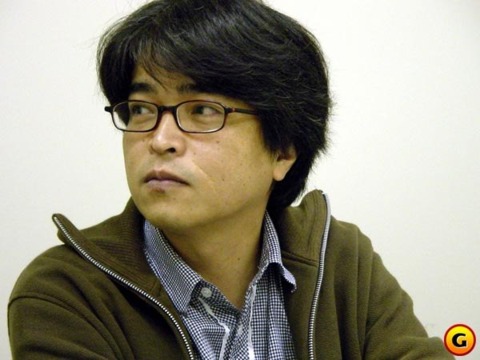


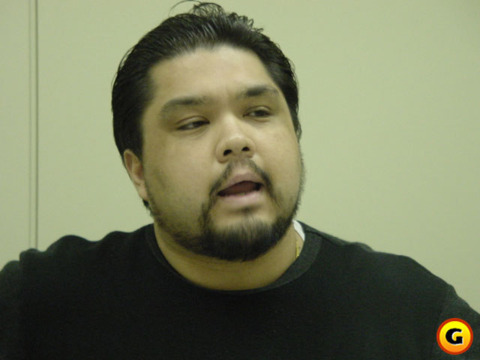
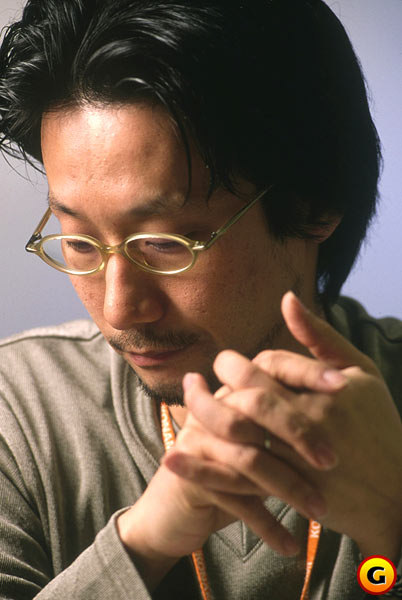
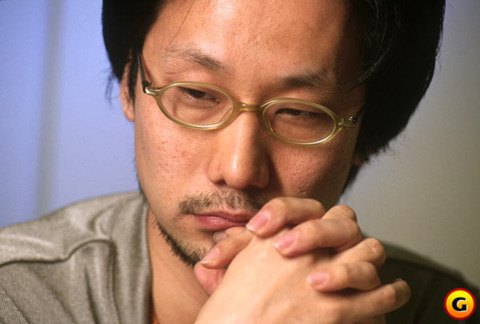

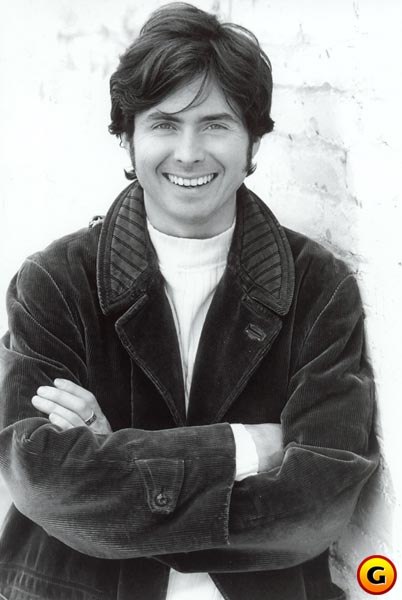
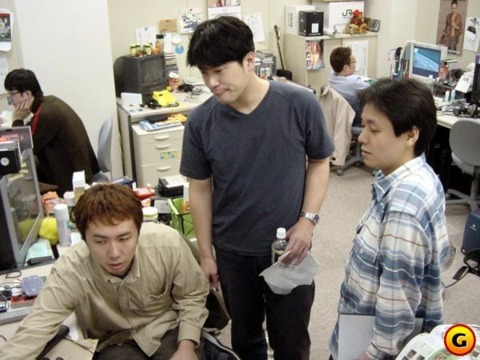
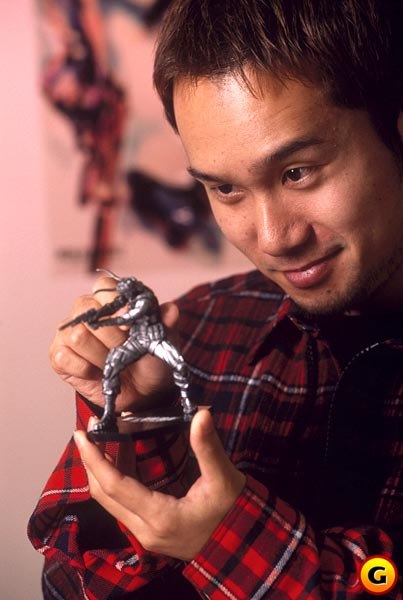
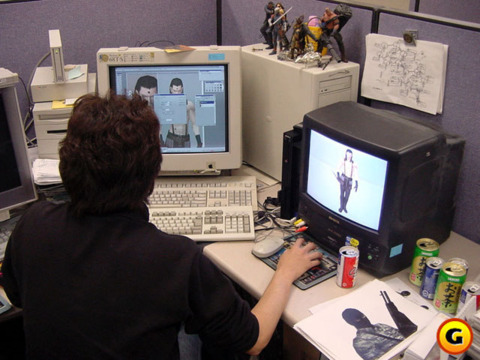

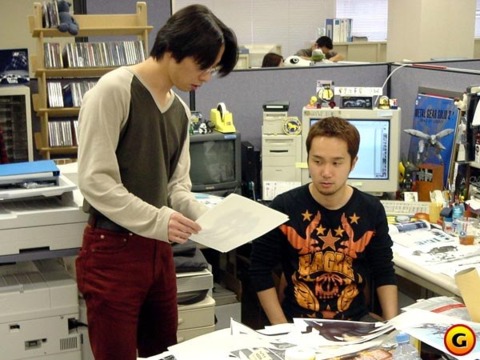
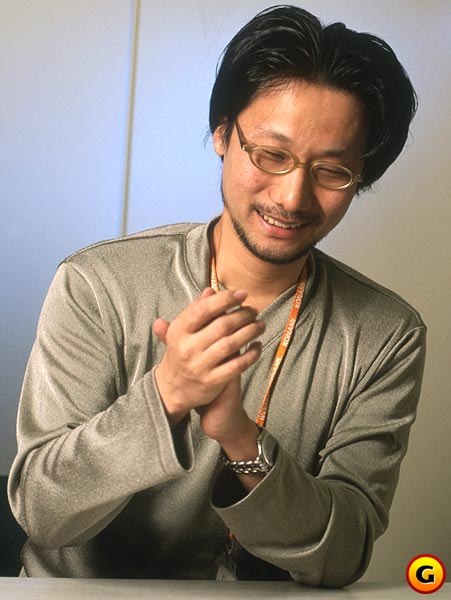
Join the conversation